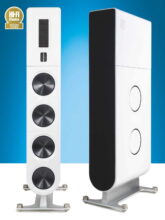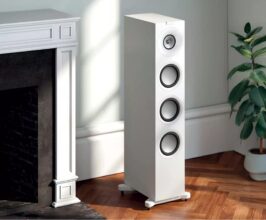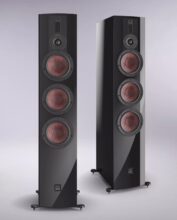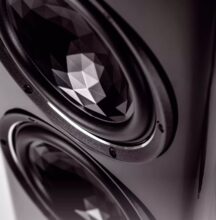DALI Epicon 6 Review
For its Epicon models, Danish speaker specialist Dali has developed new magnet systems that provide significantly more control under dynamic conditions. The Epicon 6 is the smaller of two floorstanding speakers and stands out with lively performance and maximum listening pleasure.
by Wolfram Eifert
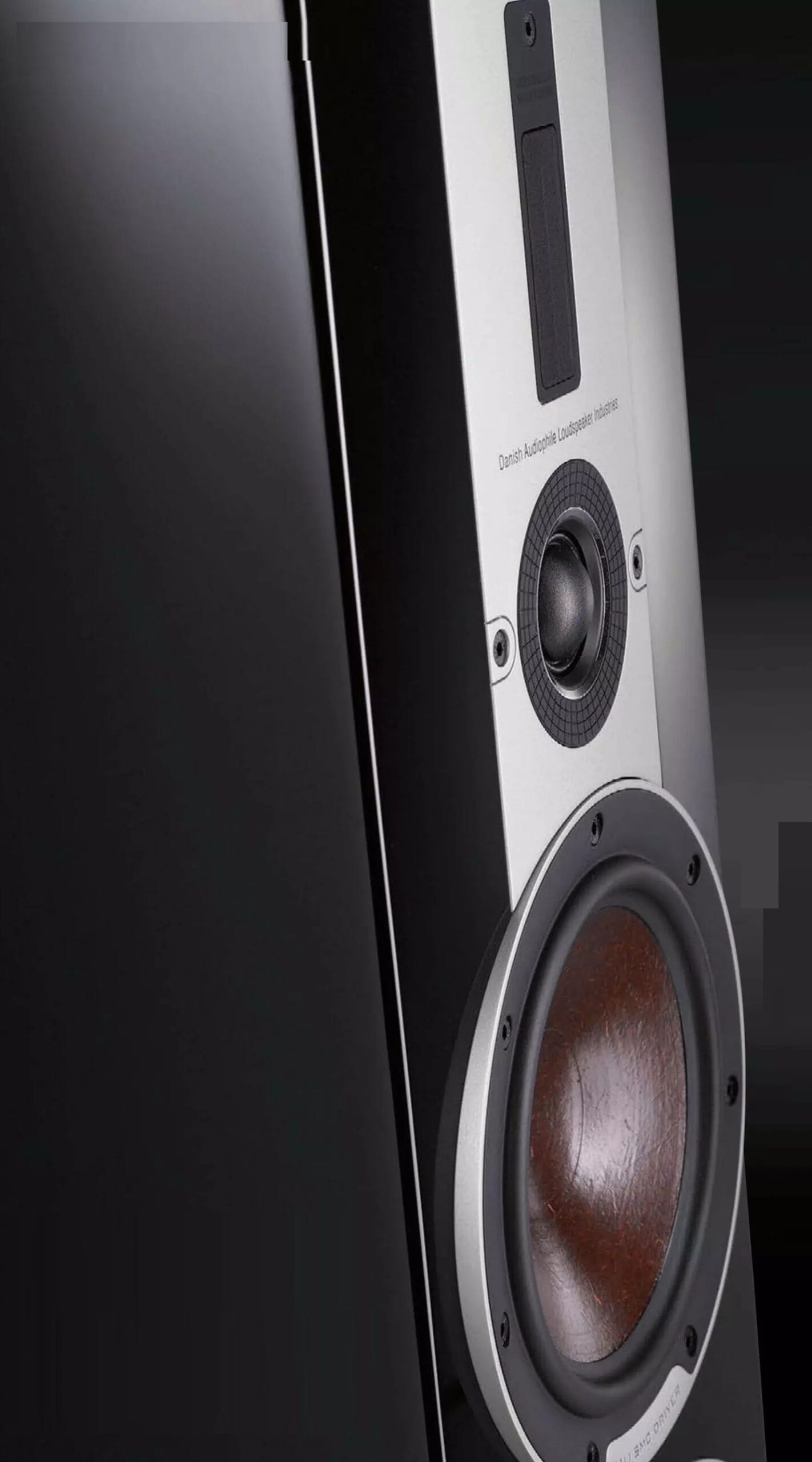
TECHNOLOGY AT ITS BEST: A mid-bass driver with a glossy, reddish cone made of natural cellulose and a resonance-free textile dome tweeter form the tonal heart of this elegant floorstanding speaker.
If designers want to understand their customers, they just need to slip anonymously into the crowd at a trade show. Great demonstrations often get applause, but it’s the critical remarks that reveal more when the sound doesn’t meet expectations. People often blame the speakers almost by reflex, commonly pointing to certain membrane materials as the cause.
One person who doesn’t get rattled by such quick judgments is Lars Worre, CEO and lead innovator at Danish speaker manufacturer Dali. As a well-rounded expert, he knows how important membrane materials can be, along with their high standing among buyers, but he believes other factors are more crucial. Worre sees strong potential for improving sound, particularly in the design of magnet systems. Following this principle, the Epicon series uses a completely new magnet material that is claimed to generate far fewer distortions under dynamic operation than standard ferrite magnets.
Additionally, Dali says it has reduced the typical frequency-dependent variations in magnetic field strength. This new material, called “Soft Magnetic Compound” (SMC), is used in all cone drivers of the Epicon series, aiming to make them sound remarkably authentic and powerful, given their cabinet size and cone area.
7Review has already tested the Epicon 2 and 8 in earlier editions. Now, we turn to the middle model, the Epicon 6, which is the smaller of the two floorstanding speakers and offers dimensions that fit well in a normal living room. Compared to the bigger Epicon 8, the 6 lacks a dedicated midrange driver, and both its bass drivers and cabinet volume are smaller. As a result, it is about 20 centimeters shorter than the 8, making the 6 visually more discreet.
In terms of cost, you save about $5,500 per pair.
If you share Worre’s enthusiasm for these new magnet systems, you might expect the smaller Epicon 6 to work miracles. Smaller drivers need a bigger excursion to reach the same volume level, so they benefit especially from linearizing technology. Our thorough AUDIO-style test will examine if this idea holds up.
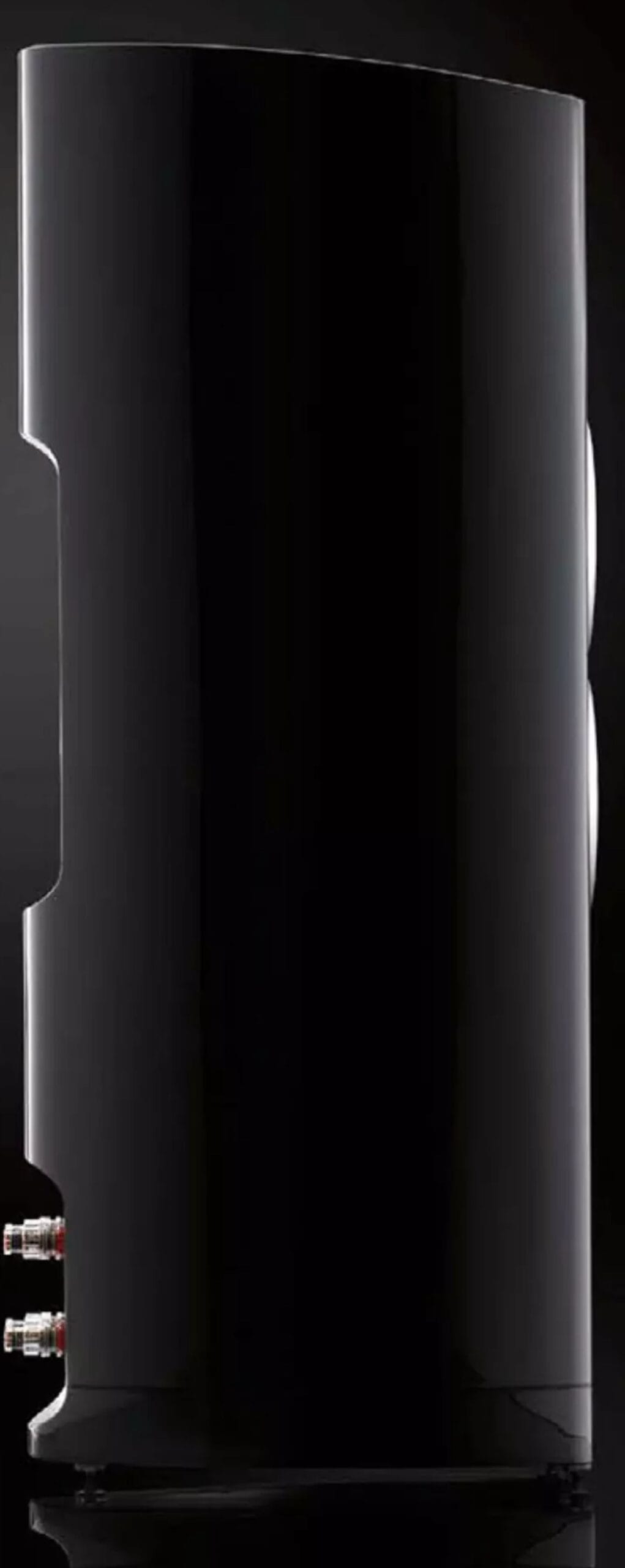
FORM FOR GREAT SOUND: The sides, made of six MDF layers, curve toward the back like a ship’s stern. This design looks sleek and gives the cabinet excellent stability.
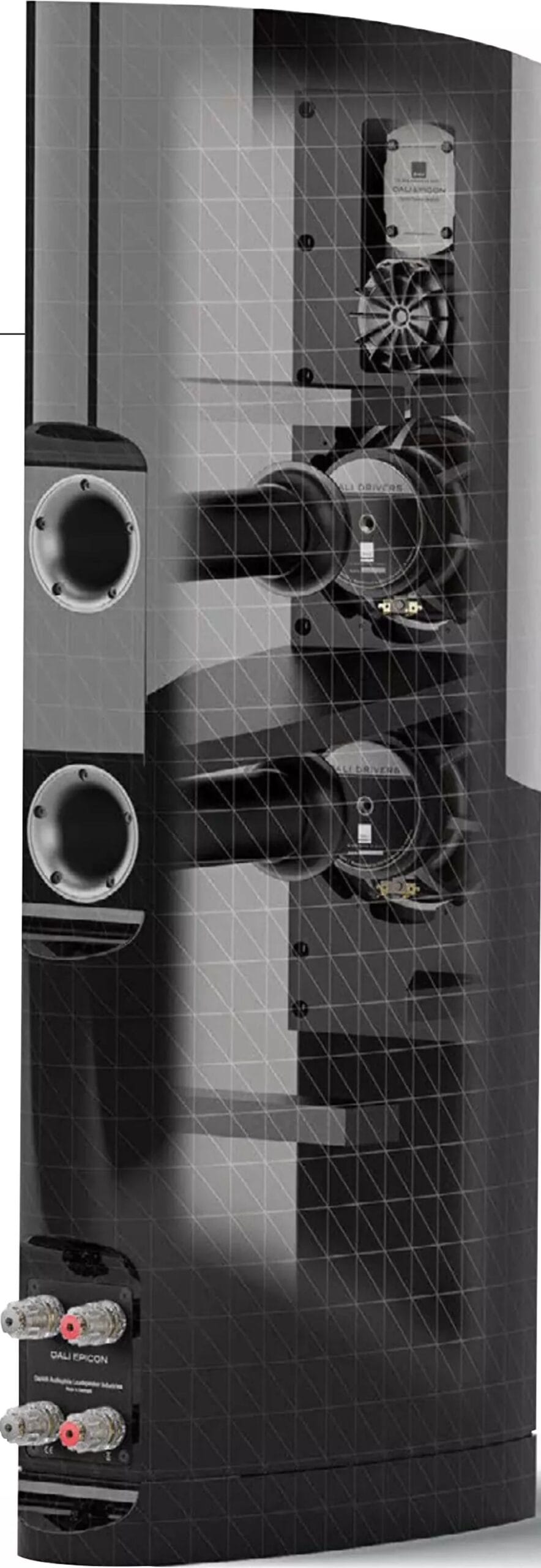
ELABORATE DESIGN: The reflex ports are close to the drivers to reduce losses and boost efficiency. To avoid standing waves, the cabinet is segmented internally. The terminal has adjustable clamping force even for banana plugs, improving contact reliability.
Despite their focus on technical precision, the Danes also excel at design and build quality. The Epicon 6 has carefully balanced proportions. Besides the classic black finish, Dali offers two high-gloss wood versions, all produced with almost surgical precision. Even the large custom bi-wiring terminal at the back is a mechanical delight. It firmly accommodates both spades and banana plugs, making frequent cable changes straightforward and enjoyable.
Every joint and recessed area is finished accurately, even in spots you don’t normally see. With the new Epicon series, Dali—still a relatively young brand—fully arrives in the high-end elite for design and craftsmanship, a field often led by brands like B&W or Sonus Faber.
Although the Epicon 6 has four drivers, its acoustic design remains fairly straightforward. Essentially, it’s a two-way system expanded at the top and bottom of the frequency range with additional drivers, so there’s only one crossover point in the critical midrange. The upper woofer also handles midrange frequencies, much like in the Epicon 2, with the second woofer helping only below around 700 Hz. Technically, the Epicon 6 is a hybrid of three-way and two-way concepts. In practice, it combines the fast response of a top-tier two-way speaker with the bass strength of a larger floorstander, creating a remarkable mix of agility and power.
In the treble range, Dali uses a high-end dual tweeter consisting of a round textile dome and an additional ribbon with a rectangular membrane. This two-in-one design, mounted on a single plate, is taken from the flagship Epicon 8. The smaller Epicon 2 does without this extra tweeter—an indication of its importance. Although the ribbon has more surface area than the dome, it generates no more than about 5% of the high frequencies. Its lighter mass lets it play higher and spread sound more broadly, thanks to its narrow profile. Working together, these two tweeters cover frequencies from well below 3 kHz to well above 40 kHz—usually achievable only with hard-dome tweeters, which often require careful resonance control. The softer membranes in the Epicon setup have no such issues.
The ribbon ultimately adds an extra dose of clarity and sparkle that is challenging for a textile dome alone to produce. Since the required movement at very high frequencies is minimal, conventional magnets are used in the tweeter module—expensive SMC parts wouldn’t provide extra benefit here.
For frequencies up to about 2,500 Hz, Dali uses stiff cellulose cones reinforced with fine wood fibers and a special coating. Thanks to this classic recipe, designer Lars Worre achieves high rigidity without the breakup problems that metal or ceramic cones sometimes have, which can require very steep crossovers or heavily damped suspensions. Such measures can hide musical details—something no true sound enthusiast would accept.
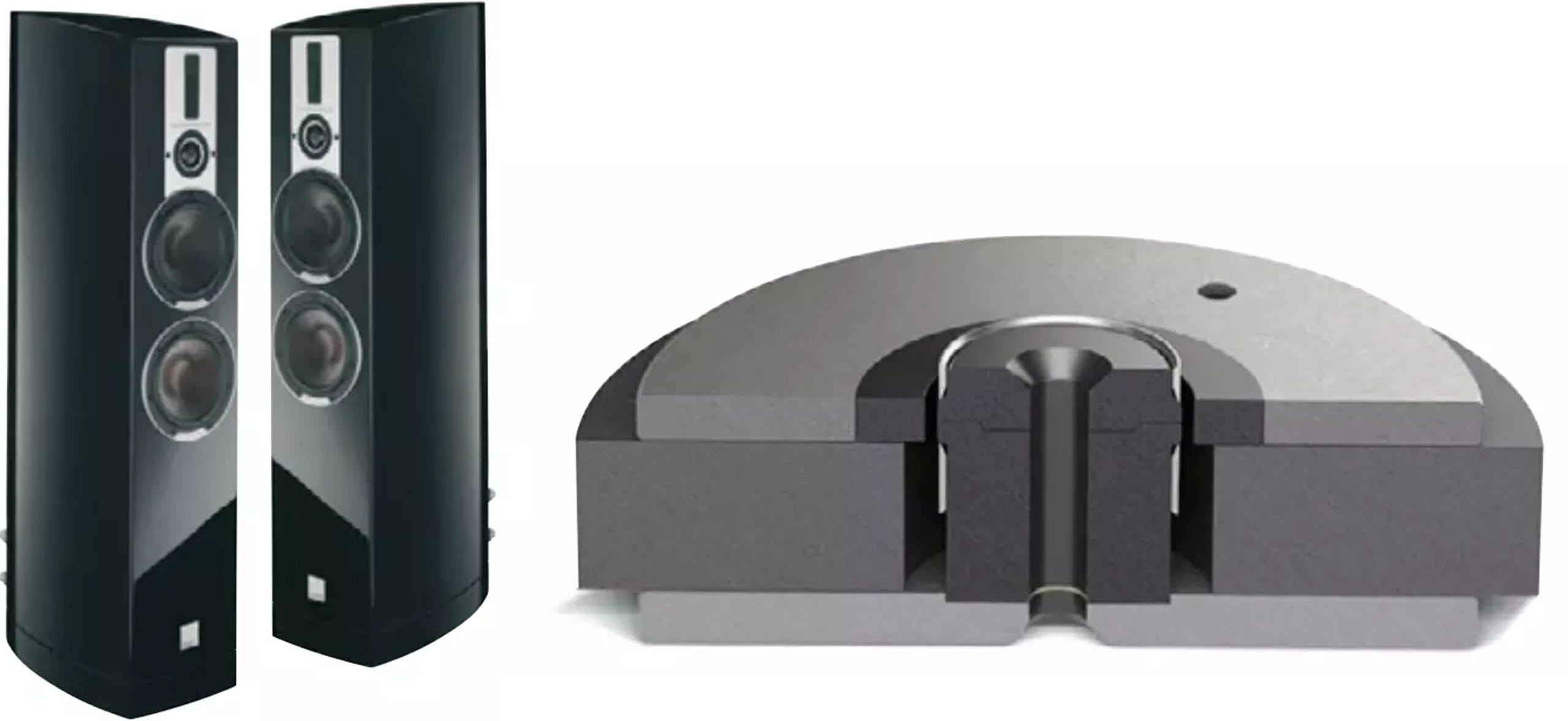
MAGNET SYSTEM CLOSE-UP: This cutaway shows how the silver-colored voice coil moves up and down. The soft-magnetic SMC in the center pole makes the force more linear, which leads to better purity of sound, especially with complex music.
Because cellulose membranes are naturally quite neutral, they don’t need intricate design tweaks in the drivers or the crossover. All Epicon models have relatively few, directly soldered crossover components.
MEASUREMENT LAB
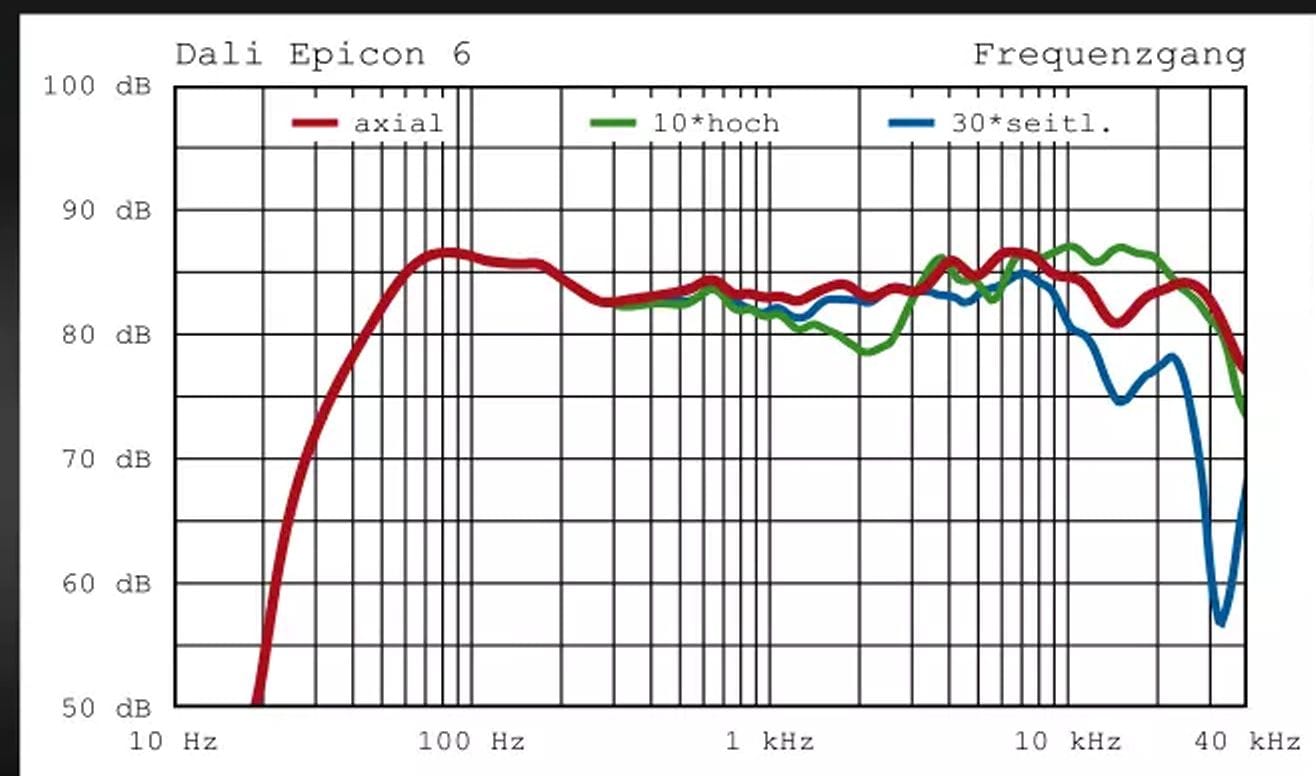
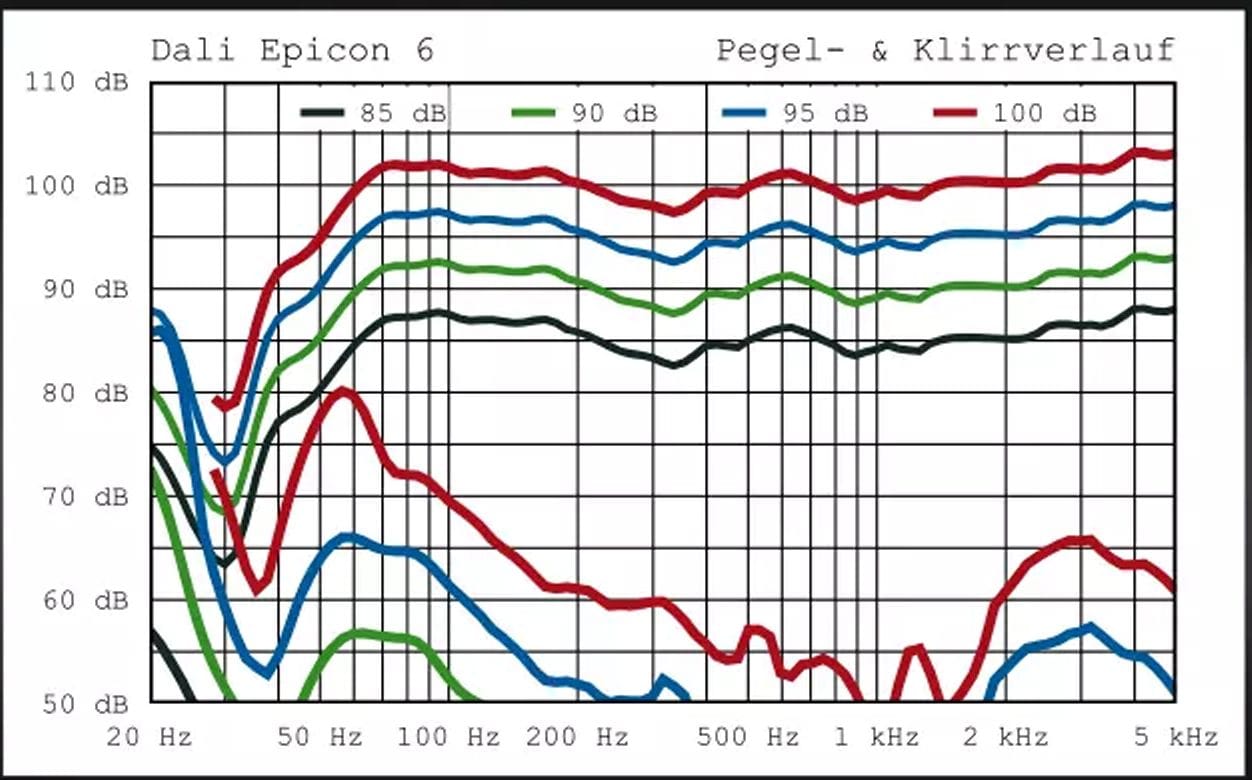
In the anechoic chamber, the Epicon 6’s frequency response shows a slight boost in the bass and treble, with a nicely balanced radiation pattern overall. Bass extends down to about 46 Hz. The highest measured volume at 1 meter is about 103 dB. Distortion (right diagram) is particularly low in the midrange. AK: 61 (which translates to 6.1 on a 10-point scale).
NEW DRIVERS BOOST LIVELINESS
The entire design focuses on authenticity and detailed tone, which also results in a very easy speaker load, modest power requirements, and stable impedance. This means even less powerful amplifiers can drive it without problems.
The cabinet construction is also meticulous. The front baffle alone is over 3 centimeters thick and is further braced inside. The curved side panels are made of six bonded layers, creating a narrow back section about 5 centimeters thick.
Fabric grilles can protect the drivers or offer a more subdued look. Audiophiles can appreciate that these grilles hardly affect the sound at all. They use a thin, very acoustically transparent fabric on a carefully designed frame with varying strut spacing to prevent any grill vibration.
Once powered, it’s clear why Lars Worre and his team are so enthusiastic about their work. The Epicon 6 displays an exuberant joy in reproducing music—something that usually appears only in higher price brackets. After the initial surprise, you immediately start wanting a pair, because the Epicon 6 responds so sensitively to musical details and brings real listening pleasure.
Well-known test tracks from Roxette and Metallica—both full of big guitar riffs and vocals that demand lots of clarity—were handled by the Epicon 6 with astonishing effortlessness. You only noticed how loud it was when you tried to talk to someone sitting beside you—no harshness, no fatigue in the ears.
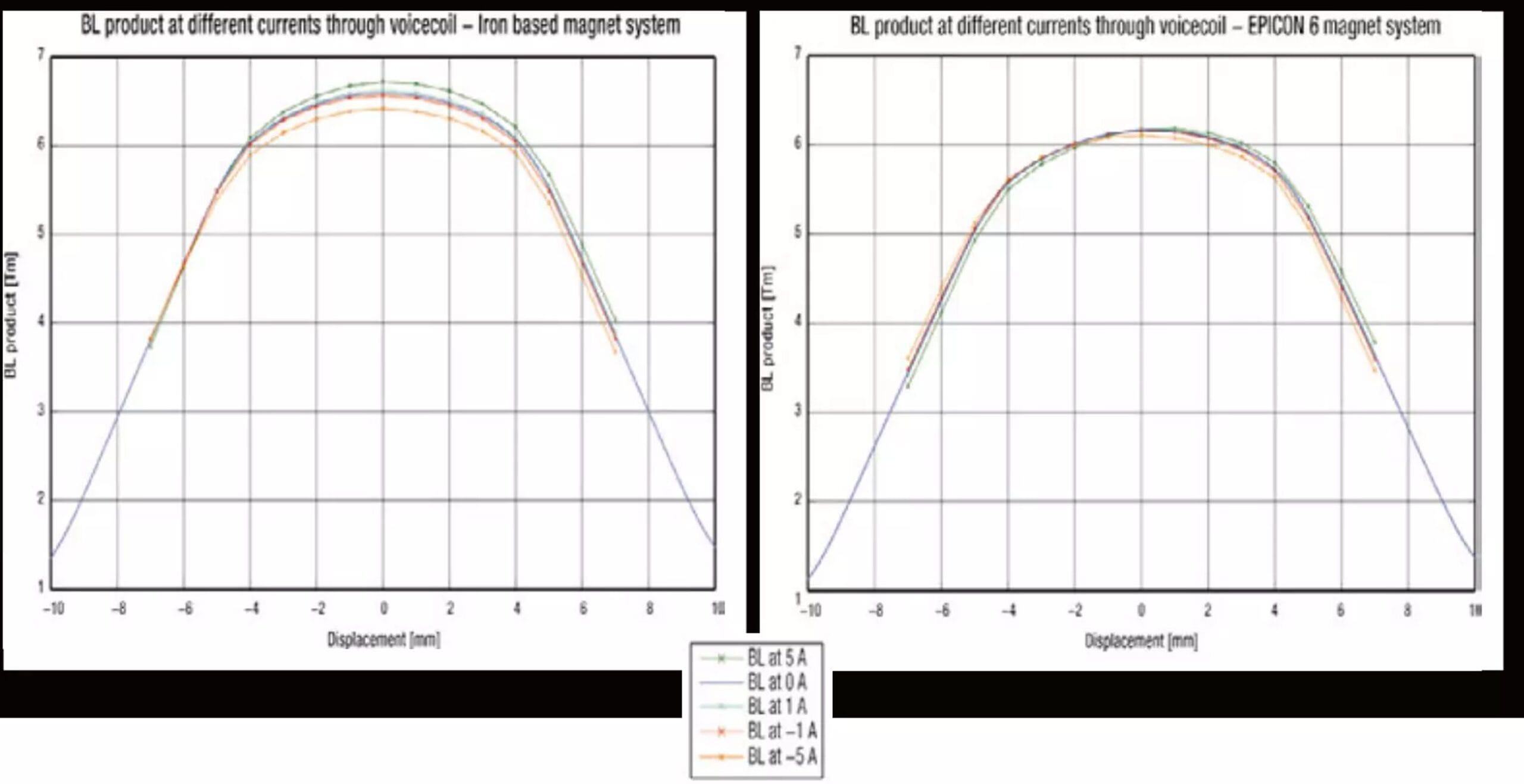
SMC VS. IRON: The manufacturer’s charts show how force in the voice coil gap changes with different currents and coil positions. With a standard iron magnet (left), the force varies greatly as current changes. With SMC, it barely changes. This more linear drive reduces distortion.
In the lab, the highest measured volume reached 103 dB, a typical figure, but far more impressive was how easily it handled every dynamic nuance. You can enjoy very detailed listening even at moderate levels—so there’s no concern about losing depth when keeping the volume family-friendly.
Despite its impressive liveliness, the Epicon 6 sounds pleasantly refined, never aggressive. We often marveled at how clearly a speaker that’s only about a meter tall produced such deep, well-defined bass. Even exceptionally recorded grand pianos, with all their tonal richness, couldn’t unbalance it—neither in tonality nor dynamics. The team at Dali deserves praise for this achievement. Competing brands will have to admit that Dali scored a major success with the Epicon 6.
Specification
- Model: DALI EPICON 6
- List Price: $9,500 (approx.)
- Warranty: 5 years
- Dimensions (W x H x D): 23.2 x 102.5 x 44.1 cm (without base)
- Weight: 30 kg
- Finish Types: Veneer / Foil / Lacquer
- Colors: Black Lacquer, Makassar, High-Gloss Walnut
- Design Principle: 2.5-way, Bass Reflex
- Room Adaptation: None
- Special Features: –
Verdict
Don’t be deceived by its slender looks—the Epicon 6 packs a powerful punch. With its new, highly linear magnet systems and the strict avoidance of unnecessary mechanical losses, this Scandinavian beauty delivers an outstanding blend of energy and tonal fidelity.
Audiogram
Positive: Emphasized open and lively sound even at moderate levels, multi-layered bass, precise spatial imaging.
Negative: –
| Criterion | Approx. 10-Point Scale |
|---|---|
| Neutrality | 10.0 |
| Detail Resolution | 11.0 (exceeds standard scale) |
| Imaging / Localization | 10.0 |
| Spatial Presentation | 10.5 |
| Microdynamics | 10.5 |
| Maximum SPL | 9.0 |
| Bass Quality | 9.5 |
| Bass Depth | 9.0 |
| Build Quality | Outstanding |
AUDIO Sound Rating: 100 points (≈ 10/10).
Price/Performance: Very good
The DALI Epicon 6 Loudspeakers! 4Kᵁᴴᴰ | Gabin - So Many Nights
Interested in the DALI EPICON 6 speakers? The DEMO pair used in this video will be on sale.


